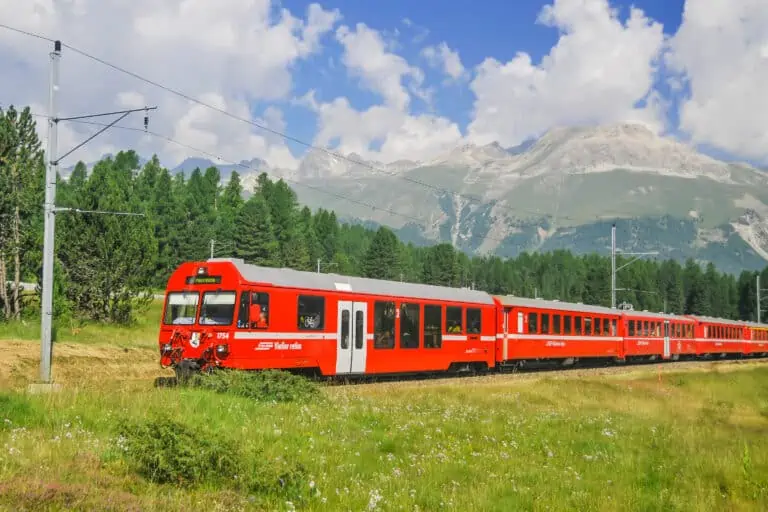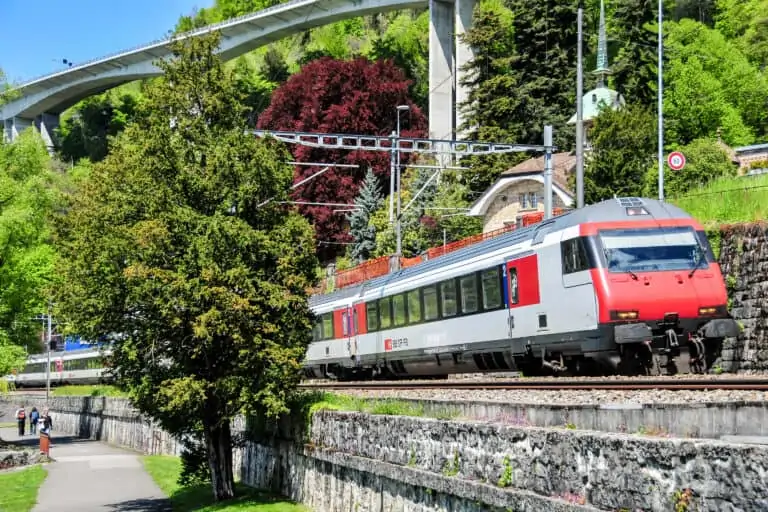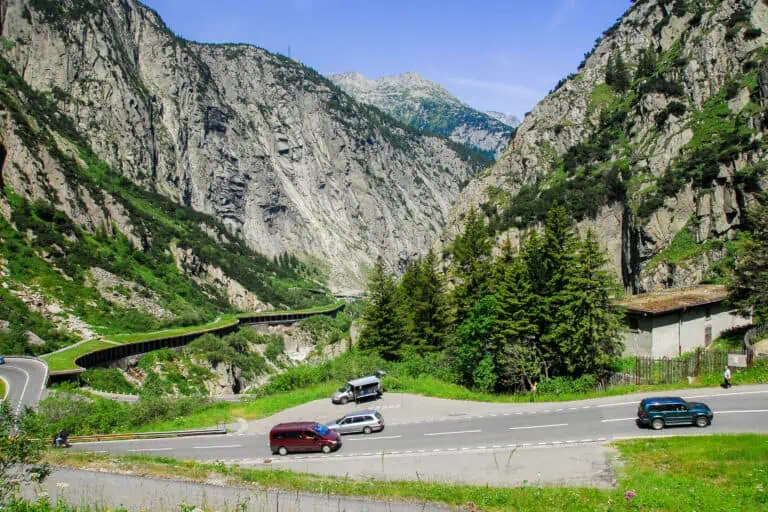Travel by car or train in Switzerland: what’s best?
The excellent Swiss trains and buses are the best way to explore Switzerland. The public transport system efficient, eco-friendly, and gets you to nearly all beautiful spots that cars can’t reach. Plus: driving the Swiss roads requires good skills, knowledge of Swiss traffic rules, and constant attention.
Of course, there can be good reasons to drive as well. Switzerland has beautiful pass roads for example.
Good reasons to travel by car
- You intend to visit very remote areas with little or no public transport.
- Your main goal in Switzerland is to explore the pass roads.
- You have a huge amount of luggage. There are luggage transport services for train travelers, but this can be pricey if the amount of luggage is excessive.
- You’re a skilled and cautious driver and you greatly enjoy exploring a country by car.
- You have specific reasons to avoid public transportation.
Good reasons to travel by public transport
- You want to include Switzerland’s many scenic train and boat trips in your itinerary.
- You want your trip to be safe. Public transport is safer in unknown mountainous terrain than driving. I recommend public transport if you are not used to driving in the mountains, or not used to driving in the right lane. In winter, I advise you not to drive, unless you’re an experienced driver in such conditions.
- You want your trip to be eco-friendly.
- The public transport system in Switzerland is among the best in the world. If you are not a frequent train traveler, this is the best place to get a break from driving and enjoy a perfect public transport network.
- If you don’t speak any of the local languages, it will be easier to request assistance in English while using public transport.
4 wrong assumptions about car driving in Switzerland
1. Renting a car is cheaper than train traveling
Driving a rental car can be cheaper than using public transport, but it depends on what you’ll be doing in Switzerland. Real costs can be underestimated. Download a spreadsheet from this page to compare train and car costs.
Take these costs into account:
- the daily rental fee. Be sure to pick a large enough car. An economy 4-seater is not sufficient for 4 people plus their luggage.
- fuel or charging costs
- parking
- excursion tickets. Without a train pass, you would pay the regular price for cable cars, boat trips and cogwheel trains to places you can’t reach by car. Train pass holders get a 25% to 100% discount on such trips, and free access for children up to 15 years old. If you drive, consider at least a Swiss Half Fare Card to save money.
- car trains to cross the mountains, especially in winter
- the motorway vignette
- fines. These can be avoided if you drive carefully. Be aware of the traffic regulations, and do not speed. This requires focus: mind the signs and pay special attention when driving downhill. There are quite a lot of speed traps.
- additional fees if you rent your car in one country and drop it off in another country.
2. A car offers more flexibilty
With a car, you can indeed stop whenever and wherever you like. You’re not dependent on public transport schedules. However:
- Public transport schedules are frequent in most regions, and there are train and bus stops about anywhere in Switzerland.
- Public transport can also be more suitable for scenic trips and hikes: you don’t need to go back to where you parked your car.
- There are many places you can’t reach by car. There are car-free towns (such as Zermatt), car-free regions (most of the Jungfrau Region for example), and there are no roads to most peaks. This means you’ll have to change to a train or cable car at some point anyway.
3. It’s quicker to travel by car
Whether car or train traveling is quicker in Switzerland, depends on the route, day, and time. Trains are often quicker for longer journeys. If you travel from one smaller town to the other, the car is often faster. In all, there’s no big difference between car and train time-wise.
Beware of possible delays when driving:
- Traffic jams are common around the larger cities during rush hour.
- Long waits for tunnels in high season are common too.
- The indicated times in online route planners are usually shorter than the real driving times. Such indications don’t include stops, (unexpected) road construction works or the delay caused by driving in the mountains.
- Driving on narrow mountain roads is slow, and should be slow to be safe.
4. I need a car to enjoy scenic routes
There are indeed wonderful scenic roads in the Swiss Alps. But there are wonderful scenic train routes too. They are at least as impressive and safer than the roads.
Twisty roads require constant attention of the driver, so you won’t see much scenery until you pull over for a break.
3 unnecessary concerns about Swiss public transport
1. It’s hard to find my way
If you are not used to public transport, you might need a day to get accustomed to the system. But Swiss public transport is very accessible and easy. There are signs everywhere and there is staff to ask questions.
Many tourists are impressed with the ease of use and effectiveness of the Swiss public transport system.
2. Booking trips is a hassle
You don’t need to book trips in Switzerland. You can use public transport spontaneously: go to the train station, get a ticket, and board any train you like. If you have a rail pass, you may not even need tickets.
Apart from a few tourist trains, there is no need for seat reservations. It’s similar to subway systems. You don’t book these in advance either, but simply use the system when you need it.
3. I can’t handle my luggage
As long as you can carry your own luggage in one go, it won’t be difficult to get it on the train. There’s usually plenty of room in trains for your bags and suitcases. You’ll find lockers and storage options at train stations.
Moreover, you can use luggage transport services if you can’t carry your luggage, or prefer to travel without.
The key is to not overpack, whether you’re traveling by car or by train. It will make your trip much more pleasant.
How to combine train and car
If you can’t do without a car, we recommend smartly combining the advantages of the car and public transport. Some examples:
- Do most of your traveling by train, and rent a car only for days on which you want to explore remote valleys or pass roads.
- In case of lots of luggage, you can rent a car to travel from one base town to the other. Use public transport for local day trips. A Swiss Half Fare Card can drastically reduce the costs of such trips.
- If you have booked accommodation in a village with limited or no public transport, you will need a car. You can then drive to the nearest rail station and enjoy train rides from there.
Our guides on train and car travel



